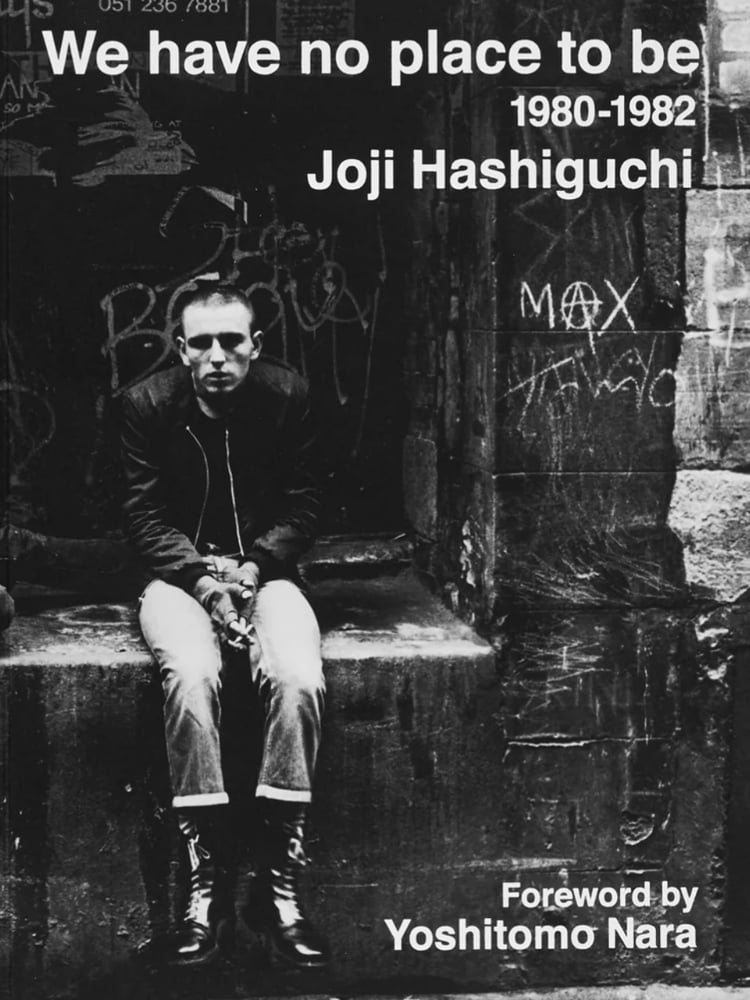(Joji Hashiguchi)(George Hashiguchi)(We Have No Place to Be 1980-1982)
£75.00
New York: Session Press, Ltd of 1000, 1st edition,Softcover,2020, 256 pages,210x290mm,In English
—Page: 256 pages
—Format: 210 mm x 290 mm
Condition:Like New, Signed copy, New condition with minor rubbed edges, An unread copy.
Shipped from Germany.
No,return.
No,refund.
Available here in a newly edited and expanded edition, We Have No Place to Be (originally published by Soshisha in 1982) veritably launched Hashiguchi’s illustrious 40-year career, and remains widely regarded as one of the photographer’s seminal early works alongside his first photobook Shisen ( The Look, recipient of the 18th Taiyo Prize in 1981). Supervised and edited by Hashiguchi himself, this omnibus edition comprises 139 black and white photographs, including more than 30 previously unpublished images. Printed in duotone with a matte finish, ”We Have No Place to Be: 1980-1982” provides a visceral window back into the eminently topical world featured within its 256 pages.
As society careened on a precipitous tilt, a generation of displaced youths fled their homes and schools, seeking refuge on the streets. Theirs was not only a flight, but a veritable fight against the stifling framework of an increasingly prescriptive life. In the early 1980s, Joji Hashiguchi similarly took to the streets of Tokyo armed with a camera, and began documenting these young compatriots in his debut work, Shisen. Before long, Hashiguchi would himself take flight – the Tokyo streets a runway for a larger world that beckoned outside Japan.
Recalling long high school nights spent listening to the Beatles, Hashiguchi first landed on the streets of Liverpool and London. Having encountered Christiane F.’s sensational 1978 autobiography, Wir Kinder vom Bahnhof Zoo (We Children From Zoo Station), he made his way from England to West Germany, traveling through Nuremberg and West Berlin. A budding Beatnik, he forayed even further West, at last arriving in New York. Over the course of his journey through these five cities, he sought to depict each through the youths that populated their streets.
Through his lens, we encounter an America exhausted by the Vietnam War. England under Thatcher, mired in rising unemployment and economic doldrums. West Berlin, on the frontline of the Cold War. Japan, erecting the scaffolding of her now labyrinthine bureaucratic society. Nearly four decades out, Hashiguchi’s We Have No Place to Be: 1980-1982 challenges present-day viewers to reexamine what we have both become and lost.
The complexities of youth have served as a captivating theme throughout the annals of photographic history. Photographers such as Danny Lyon, Karlheinz Weinberger, Bruce Davidson, Larry Clark, Nan Goldin, and Joseph Szabo made masterpieces with their investigations into the subcultures of renegade bikers, street gangs, and rebellious adolescents teetering on the dramatic cusp of adulthood. Similarly, photographers such as William Klein and Ed van der Elsken have produced distinctive street photos, famously snapped across the world’s metropolises in the 1950s and ‘60s. However, Hashiguchi is distinguished by a uniquely unwavering dedication to this theme. The sheer breadth of his travels in Tokyo and the West alike, coupled with a rapt intensity for documenting the “troubled youth” of the 1980s, culminated in a valuable document of an era.
Above all, Hashiguchi’s photos evince a preternatural ability to capture street youths in an unmediated, unguarded, intimate state. Eschewing a forced approach, Hashiguchi seemingly earned ready acceptance into the communities he photographed. Far from the clinical observer shining a floodlight on the city’s scars, Hashiguchi was understood by his subjects to be a sympathetic eye in their flailing struggle against authority and the contradictory injustices of society. As Hashiguchi reminisces, “I suspect their willingness to be photographed was in large part due to the simple fact that I was Asian.”
Since its initial publication in 1982, We Have No Place to Be has influenced generations of artists and photographers in Japan. One such artist and close friend is none other than Yoshitomo Nara, who has contributed a glowing essay reflecting upon Hashiguchi’s influence on his work, and a sage message for the present generation informed by his own experiences as a “lost” youth of the ‘80s.





